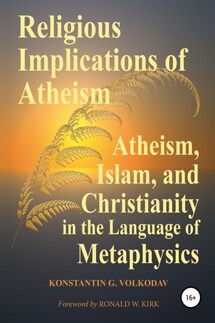Religious Implications of Atheism - страница 13
Physicists are constantly finding more and more “turtles”—more and more new laws, effects, and essences. Of course, the reliability of physical facts is beyond doubt, but the endless sequence of correct explanations itself now plays the role of a zoo from ancient myth. Physicists have learned to split protons, but how long can subatomic particles be split? Is there anything smaller than the Higgs boson? Physicists are constantly discovering new elementary particles, but how elementary are they? Atheists stubbornly refuse to notice the obvious fact that no matter how far science has advanced, there will always be an ocean of the unknown in the distance.
About the same thing was said by one of the giants of science, Sir Isaac Newton. His quote is widely known, in which he uses a metaphor that is close in meaning:
“I do not know what I may appear to the world; but to myself I seem to have been only like a boy playing on the sea-shore, and diverting myself in now and then finding a smoother pebble or a prettier shell than ordinary, whilst the great ocean of truth lay all undiscovered before me.” [22]
Since the time of Isaac Newton, our knowledge of the Universe has expanded significantly, but we also stand only on the shores of the “great ocean of truth”. Physicists have always been and will be doing the same thing as Newton: looking for “a smoother pebble or a prettier shell”, while before them there will always be an unexplored great ocean of truth.
The situation in atheistic cosmology resembles not only a metaphor with turtles, but also a trick with getting rabbits out of an “empty” hat. The only difference is that quantum cosmologists imperceptibly take out of their pocket or from under the table not rabbits, but the formulas of quantum mechanics, wave function, scalar field, etc. and put all this into the original “nothing”.
For example, in the theory of the quantum creation of the universe, it is postulated (i. e., it is proposed to believe!) That the universe arose from an unreal quantum field that did not exist in the physical sense, that is, it is a purely mathematical abstraction, called by A. Vilenkin “literal nothing”. [23] Then watch his hands! This mathematical “literal nothing” due to spontaneous fluctuations was able to give rise to a pseudo-real particle, representing the embryo of the future universe. Moreover, it, in turn, with the help of quantum tunneling overcame the barrier separating the abstract mathematical world from physical reality!
Good trick! However, physics cannot arise from mathematics just because some physicists want it, and they skillfully juggle formulas. Materialists go beyond the applicability of scientific theories that describe our world when they try to talk about something “before” the world came into being. The trick does not cease to be a trick from the fact that “serious people” with high ranks and regalia and with an intelligent look perform it. “A smart face is not yet a sign of intelligence, all stupidity on Earth is done with just such an expression.” [24] In any case, all this rhetoric does not remove the main question: how did the laws of physics arise and why are they exactly like that?
Maybe there will be a boy who will say, “But the king is naked!” It is only in fairy tales that you can lift yourself into the air by your hair or by your laces. Ontologically, physics (that is, the totality of the laws of matter) cannot create itself. Albert Einstein once remarked that it is impossible to solve a problem by thinking the same way as those who formulated it. To solve the problem of the emergence of the material universe, it is necessary to go beyond the “level of physics”; after all, not without reason, the outstanding thinkers of humankind spoke about metaphysics and philosophy.






